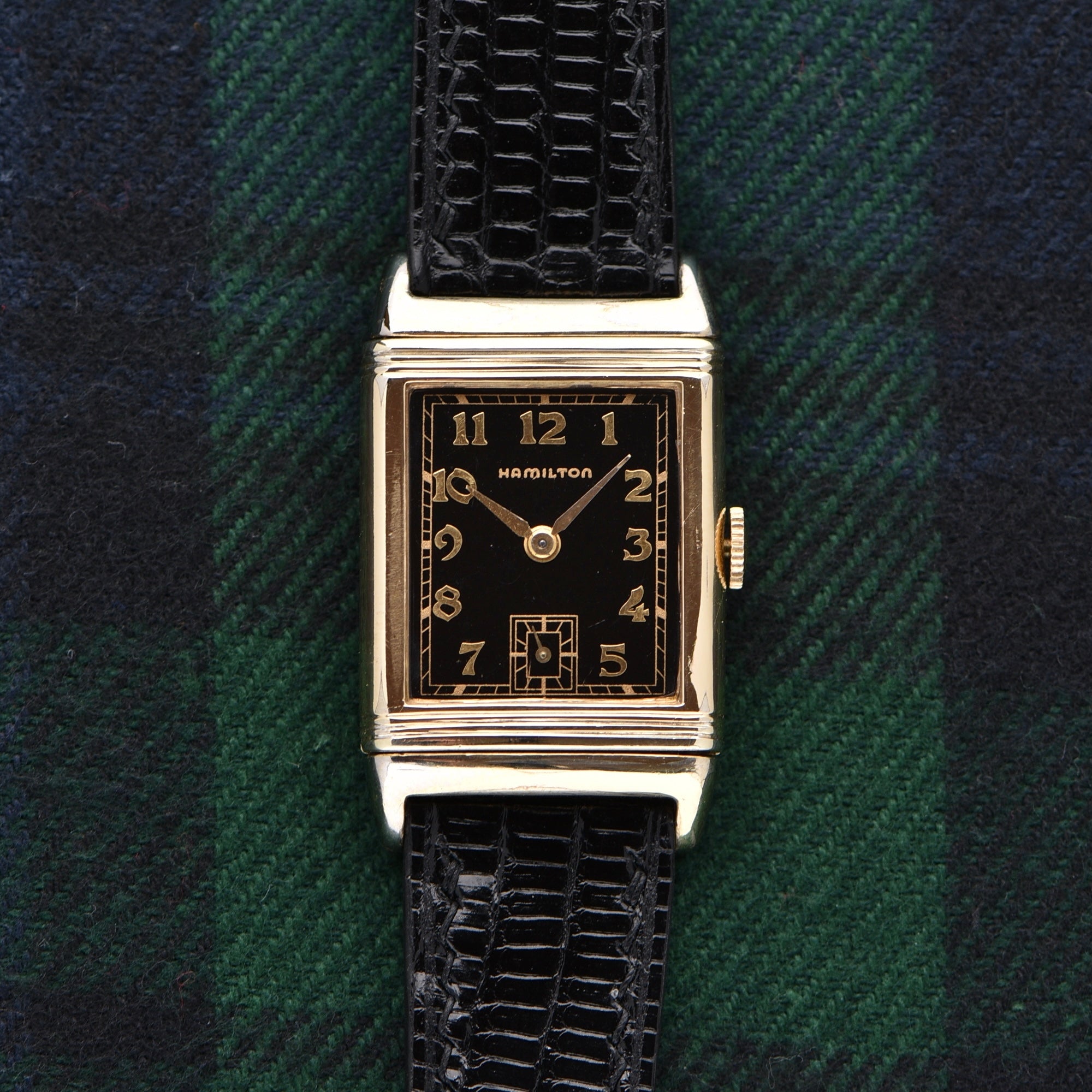
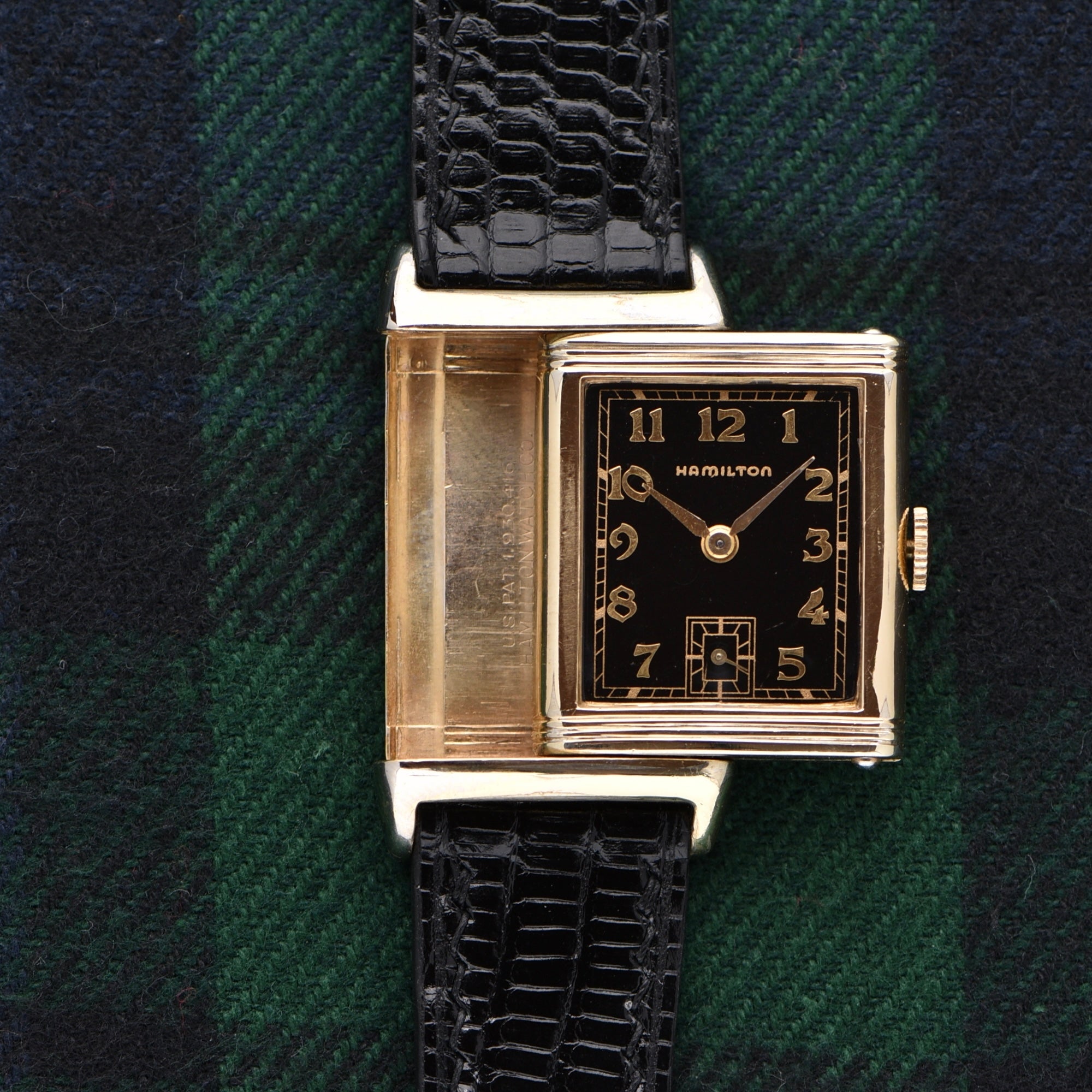
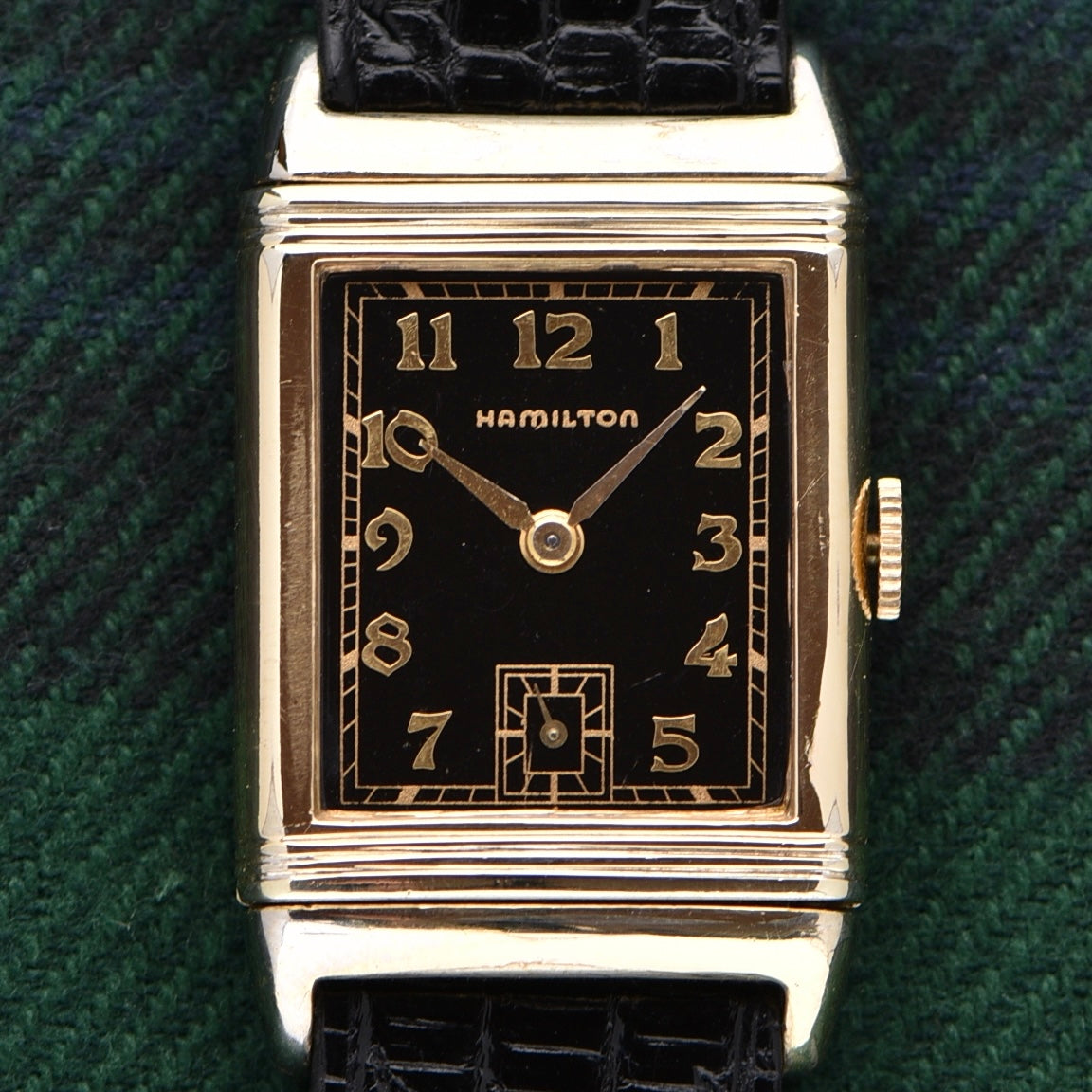

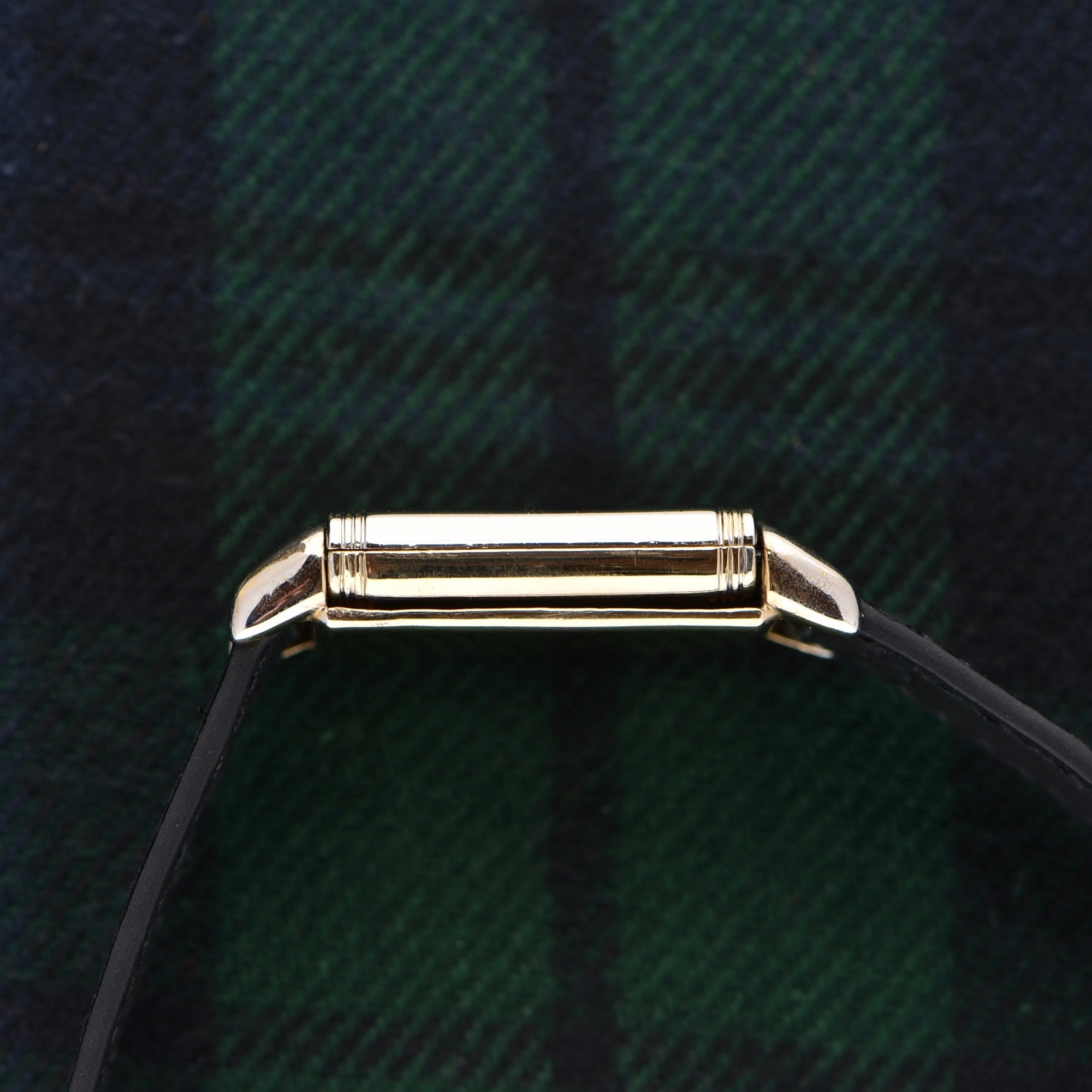
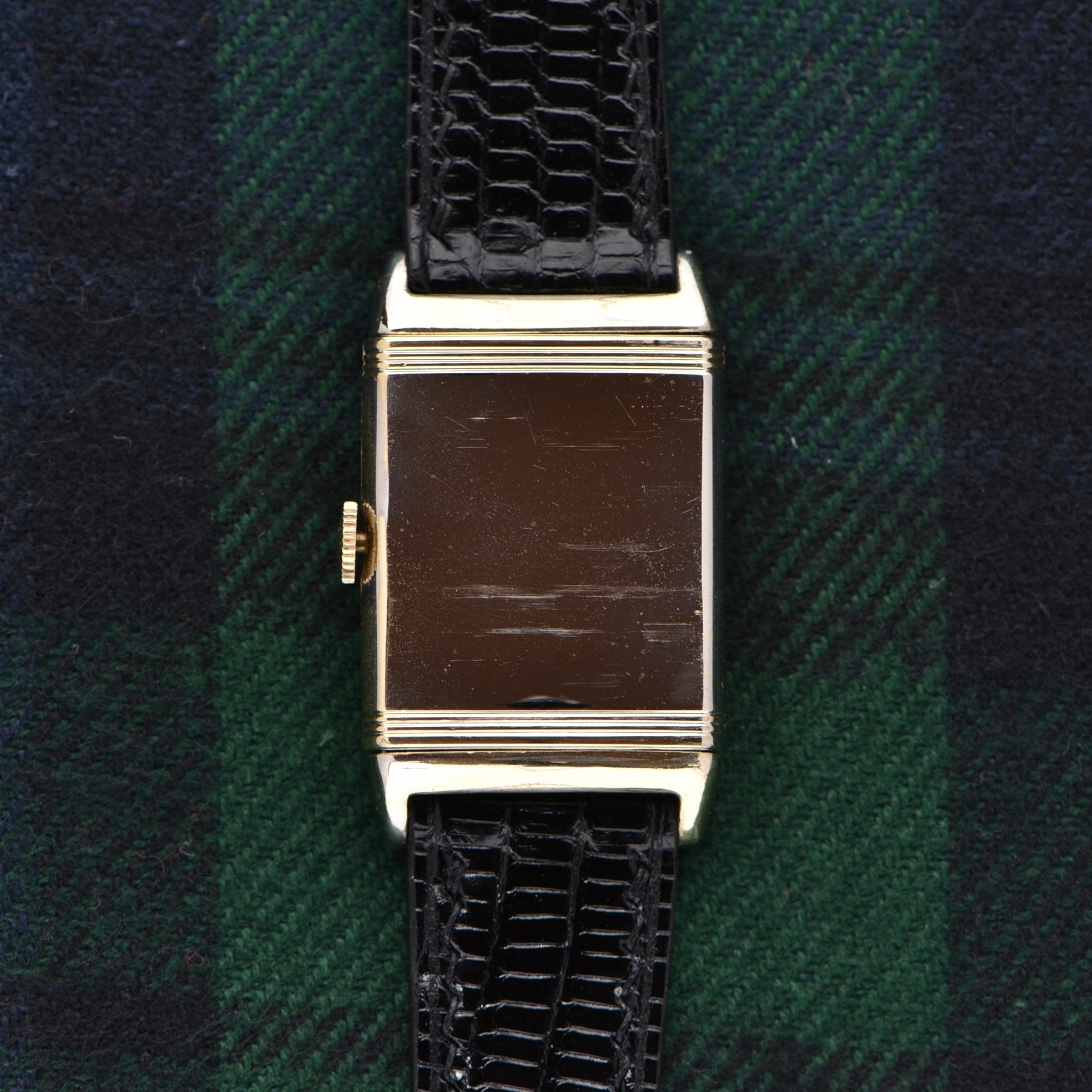


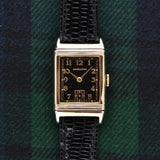
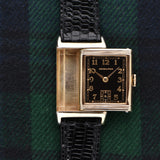
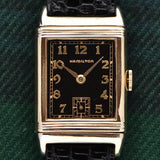
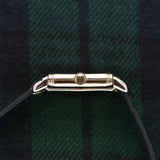
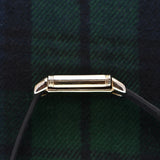
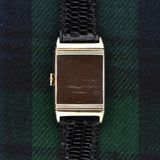

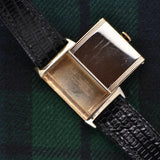
Hamilton Otis Reverso - Art Deco Dial
- Otis
-
Watch Only
- Wire Price $2,500
- Specifications
- The Story
- The Brand
Model: Otis Reverso
Case Diameter: 24mm
Lug to Lug: 40mm
Case: Gold Plated
Dial: Black
Movement: Manual
Condition
This dial is in very nice shape for its age, and light signs of wear. The crystal is in great condition with no dents or major wear just a few scratches. The gold-filled S&W case has some fading to the gold-tone.
For years, the urban myth about the Hamilton Otis Reverso was heard, with many believing that Hamilton copied the watch without permission from LeCoultre, were sued by LeCoultre, and almost put out of business because of their flagrant patent infringement. However, research has shown that Hamilton Watch Co was a corporate company that would purchase patents rather than steal them.
One day, a friend and fellow collector visited and asked if the author had purchased anything interesting. The author confirmed that they had the original paperwork from the Hamilton Factory, which showed that Hamilton paid LeCoultre 60 cents per watch to use their patent in a licensing agreement. This fee did not change, and both models would pay a 60-cent per watch royalty fee to LeCoultre.
On or around April 27, 1938, Hamilton was granted permission to use their patent to make a reversible watch. Hamilton Watch Co sent a letter to the casemaker of Schwab and Wuischpard outlining what they wanted to produce with the conditions Lecoultre also presented, and S&W could only make this watch for the Hamilton Watch Co.
Hamilton named many of their watches after people, such as Otis Byran, who was the Vice President and former chief pilot of T.W.A. Otis was a friend and skeet shooting partner of Ross Atkinson Hamilton Vice President in charge of sales. In 1938, the Reverso was named the "Otis" after his friend.
Hamilton, a watchmaker, was founded in 1893 and became a supplier of timekeeping devices to 56% of the American railroad community. The company's success was based on its focus on accuracy, functionality, and performance. The 926 pocket watch and the Hamilton Railroad Pocket Watch were developed to address the need for accurate timekeeping in the railroad system. In 1914, Hamilton began supplying watches to the US military, and the 981 wristwatch was produced to stay ahead of the game.
Hamilton developed watches for land, sea, and air, playing an integral role on the wrists of military personnel during World War II. The brand ceased production of watches for civilians in 1942 and won the "E" award for excellence in 1943 for its advanced timekeeping equipment during the war.
Today, Hamilton Khaki Navy watches feature unidirectional rotating bezels, screw-down crowns, and 300-meter water-resistant ratings. The current Hamilton Khaki Field collection pays tribute to these military watches with robust stainless steel cases and 12-hour scales. The Khaki Field Mechanical Lume collection features triangular hour markers and Super-LumiNova hands for readability in dark conditions.
The Khaki Field Auto watch offers an 80-hour power reserve and a 42mm watch diameter, while the Khaki Aviation series features three-handed, chronographs, day-date functions, and additional features like a drift angle calculator. Popular models from this collection include the Khaki Aviation Pilot Pioneer Mechanical watch, which evokes wristwatches supplied to the Royal Air Force during the 1970s.
In 1957, Hamilton re-entered the civilian watch market during the rise in the consumer economy, with the iconic Ventura being released as the first battery-powered watch. The Ventura was designed by sci-fi illustrator Richard Arbib and featured in the 1962 film, Blue Hawaii. It revolutionized the watchmaking industry and became the watch to wear on the rock & roll scene.
Hamilton developed the Khaki Field watch for the Vietnam War, which remains almost identical to the current models. In the 1960s, Hamilton acquired Buren Watch Company and its innovative micro-rotor, enabling the company to produce slimmer watches powered by automatic movements. In 1966, Hamilton was asked to design a unique wristwatch for Stanley Kubrick's film, 2001: A Space Odyssey.
In 1969, Hamilton produced its first chronograph movement, the automatic Caliber 11, followed by the world's first digital wristwatch in 1970. The Pulsar was unveiled on "The Tonight Show" with a digital screen that replaced any moving parts.
Hamilton was sold to the Swatch Group in 1974, and the brand began revisiting popular designs from its past. The brand continued to make appearances on the silver screen, featuring A-list actors in films such as "Men In Black," "Independence Day," and "Lethal Weapon."
In 2003, Hamilton moved its manufacturing facilities from America to Biel, Switzerland, allowing the brand to stamp its watches with the "Swiss Made" mark of authenticity. By 2011, Hamilton was producing its own personalized ETA movements with extended power reserves.
.
Hamilton Otis Reverso - Art Deco Dial
Authenticity Guaranteed
All our watches are carefully inspected to insure and guarantee the authenticity.
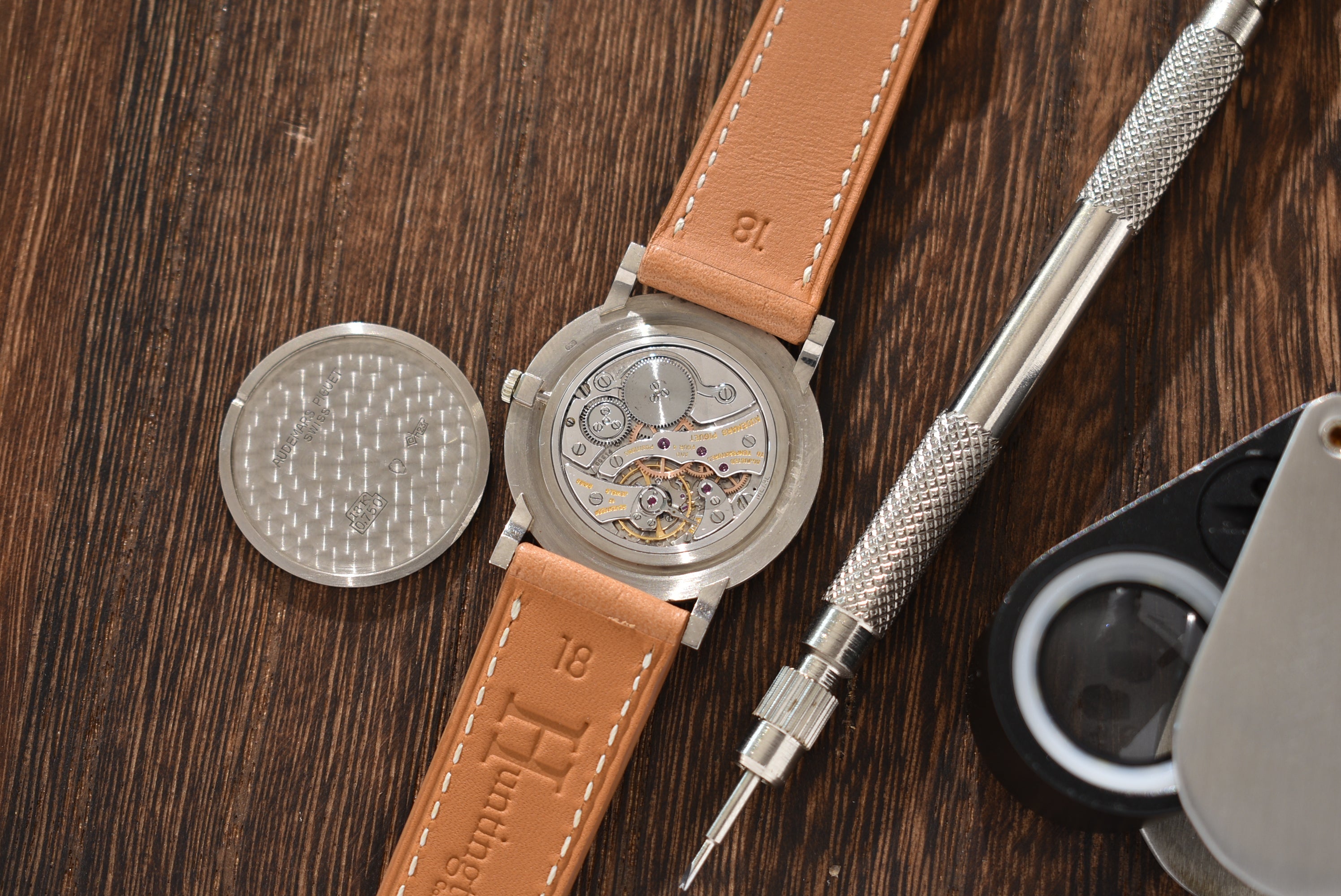
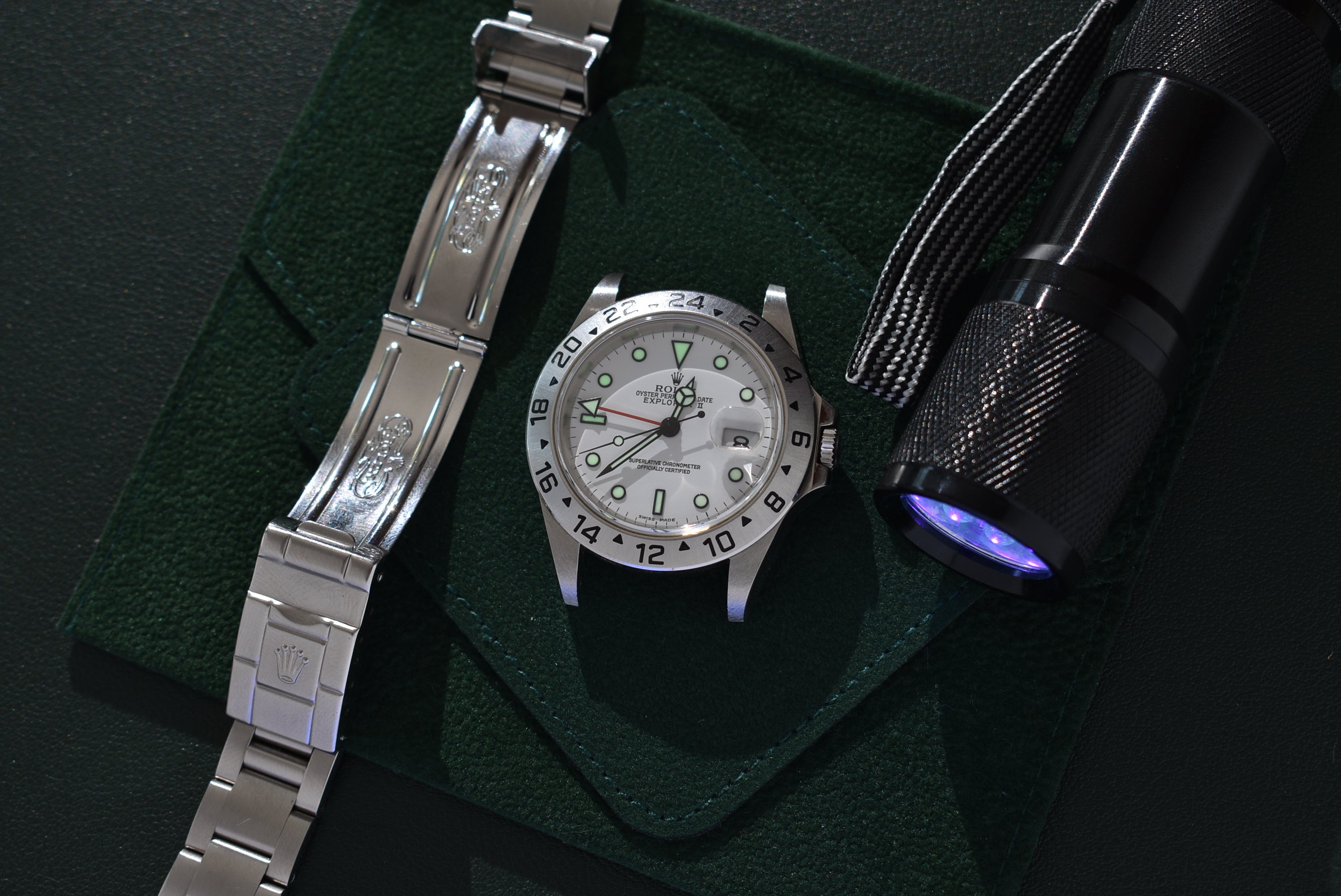
The Details
All our watches are scrutinized during inspection to make sure our descriptions are as accurate as possible.
- Related products
- Recently viewed
Cart
No more products available for purchase
Your Cart is Empty
Pair with
- Otis
-
Watch Only
- Wire Price $2,500
- Specifications
- The Story
- The Brand
Model: Otis Reverso
Case Diameter: 24mm
Lug to Lug: 40mm
Case: Gold Plated
Dial: Black
Movement: Manual
Condition
This dial is in very nice shape for its age, and light signs of wear. The crystal is in great condition with no dents or major wear just a few scratches. The gold-filled S&W case has some fading to the gold-tone.
For years, the urban myth about the Hamilton Otis Reverso was heard, with many believing that Hamilton copied the watch without permission from LeCoultre, were sued by LeCoultre, and almost put out of business because of their flagrant patent infringement. However, research has shown that Hamilton Watch Co was a corporate company that would purchase patents rather than steal them.
One day, a friend and fellow collector visited and asked if the author had purchased anything interesting. The author confirmed that they had the original paperwork from the Hamilton Factory, which showed that Hamilton paid LeCoultre 60 cents per watch to use their patent in a licensing agreement. This fee did not change, and both models would pay a 60-cent per watch royalty fee to LeCoultre.
On or around April 27, 1938, Hamilton was granted permission to use their patent to make a reversible watch. Hamilton Watch Co sent a letter to the casemaker of Schwab and Wuischpard outlining what they wanted to produce with the conditions Lecoultre also presented, and S&W could only make this watch for the Hamilton Watch Co.
Hamilton named many of their watches after people, such as Otis Byran, who was the Vice President and former chief pilot of T.W.A. Otis was a friend and skeet shooting partner of Ross Atkinson Hamilton Vice President in charge of sales. In 1938, the Reverso was named the "Otis" after his friend.
Hamilton, a watchmaker, was founded in 1893 and became a supplier of timekeeping devices to 56% of the American railroad community. The company's success was based on its focus on accuracy, functionality, and performance. The 926 pocket watch and the Hamilton Railroad Pocket Watch were developed to address the need for accurate timekeeping in the railroad system. In 1914, Hamilton began supplying watches to the US military, and the 981 wristwatch was produced to stay ahead of the game.
Hamilton developed watches for land, sea, and air, playing an integral role on the wrists of military personnel during World War II. The brand ceased production of watches for civilians in 1942 and won the "E" award for excellence in 1943 for its advanced timekeeping equipment during the war.
Today, Hamilton Khaki Navy watches feature unidirectional rotating bezels, screw-down crowns, and 300-meter water-resistant ratings. The current Hamilton Khaki Field collection pays tribute to these military watches with robust stainless steel cases and 12-hour scales. The Khaki Field Mechanical Lume collection features triangular hour markers and Super-LumiNova hands for readability in dark conditions.
The Khaki Field Auto watch offers an 80-hour power reserve and a 42mm watch diameter, while the Khaki Aviation series features three-handed, chronographs, day-date functions, and additional features like a drift angle calculator. Popular models from this collection include the Khaki Aviation Pilot Pioneer Mechanical watch, which evokes wristwatches supplied to the Royal Air Force during the 1970s.
In 1957, Hamilton re-entered the civilian watch market during the rise in the consumer economy, with the iconic Ventura being released as the first battery-powered watch. The Ventura was designed by sci-fi illustrator Richard Arbib and featured in the 1962 film, Blue Hawaii. It revolutionized the watchmaking industry and became the watch to wear on the rock & roll scene.
Hamilton developed the Khaki Field watch for the Vietnam War, which remains almost identical to the current models. In the 1960s, Hamilton acquired Buren Watch Company and its innovative micro-rotor, enabling the company to produce slimmer watches powered by automatic movements. In 1966, Hamilton was asked to design a unique wristwatch for Stanley Kubrick's film, 2001: A Space Odyssey.
In 1969, Hamilton produced its first chronograph movement, the automatic Caliber 11, followed by the world's first digital wristwatch in 1970. The Pulsar was unveiled on "The Tonight Show" with a digital screen that replaced any moving parts.
Hamilton was sold to the Swatch Group in 1974, and the brand began revisiting popular designs from its past. The brand continued to make appearances on the silver screen, featuring A-list actors in films such as "Men In Black," "Independence Day," and "Lethal Weapon."
In 2003, Hamilton moved its manufacturing facilities from America to Biel, Switzerland, allowing the brand to stamp its watches with the "Swiss Made" mark of authenticity. By 2011, Hamilton was producing its own personalized ETA movements with extended power reserves.
.
